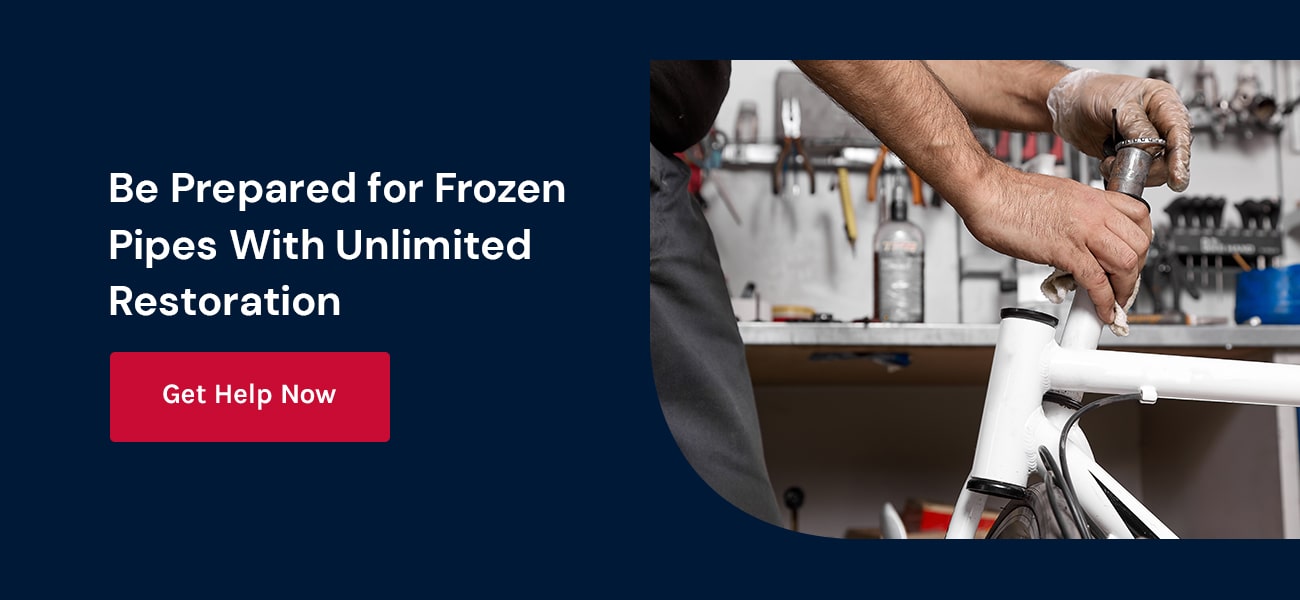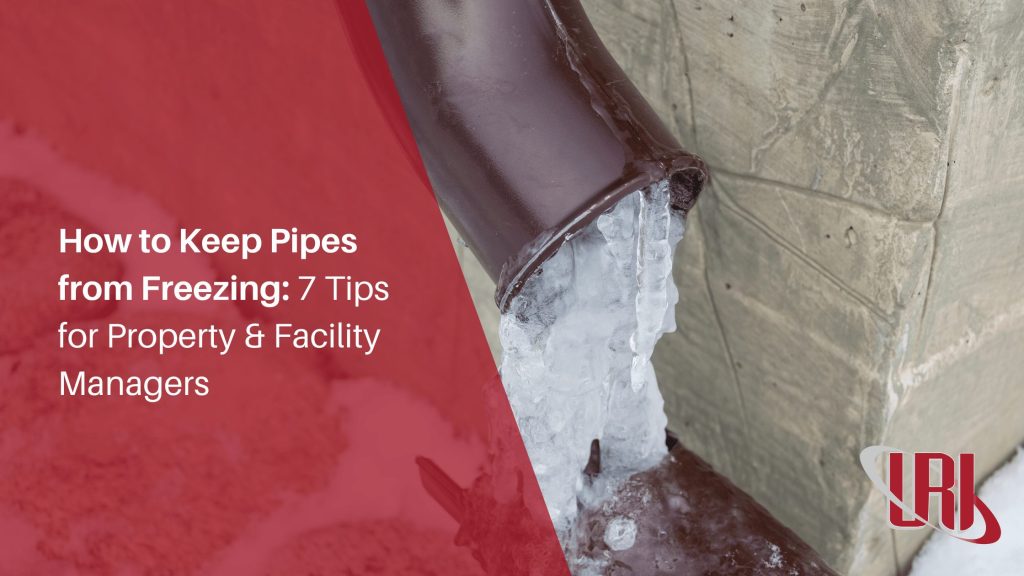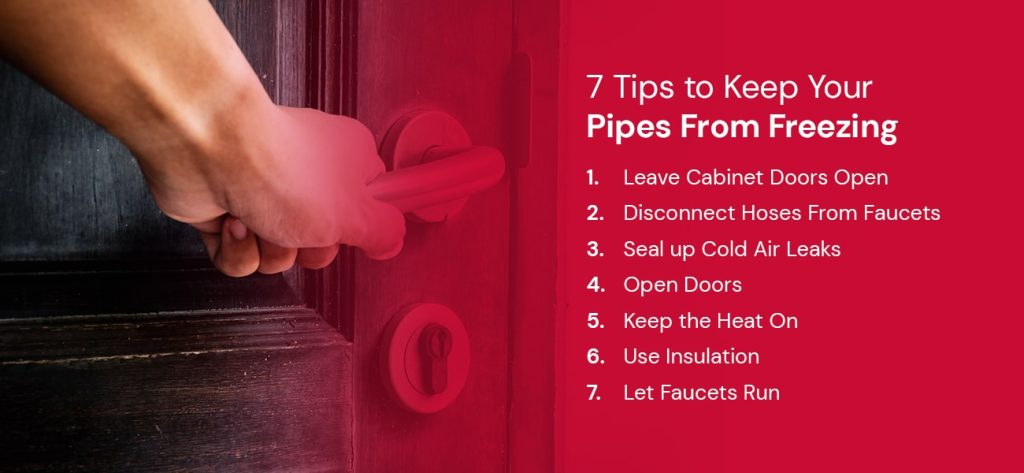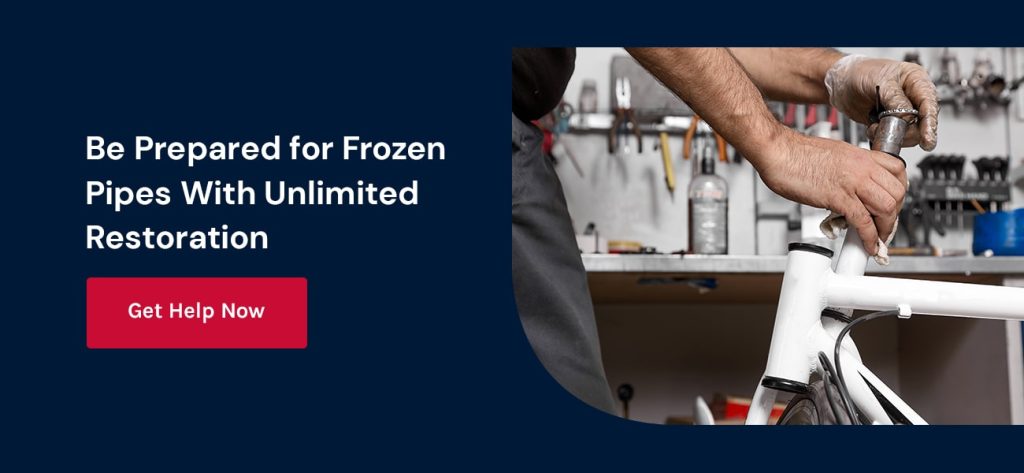

As winter rolls in, many parts of the country can see increasingly frigid temperatures. Although we do our best to prepare our buildings for the winter months, burst pipes can cause a great deal of expensive water damage. Remembering to keep pipes from freezing can easily slip through the cracks when dealing with commercial properties.
When pipes freeze over, there’s a higher chance of rupturing, and the mess left behind is something you would definitely rather avoid. Luckily, you can use several simple tricks to ensure your pipes stay intact over the chillier months.
When water freezes, it expands, so if it’s inside the pipes when it freezes, ice can push against weak areas in the pipe and cause it to burst. When the water melts, there can be significant property damage, especially if it takes some time to identify the problem.
Pipes are better insulated in colder parts of the country, and the infrastructure in these areas is designed to cope with freezing temperatures. Your lines are more likely to freeze if you experience a cold snap in a warmer area, as pipes aren’t as equipped to deal with that degree of cold.
To be precise, it’s not the pipes that freeze but the water inside. We’re taught that water freezes at 32 degrees Fahrenheit, but the answer isn’t as straightforward. As a general rule, the outside temperature has to be 20 degrees or lower for six consecutive hours before freezing begins in earnest.

Prepare for colder weather and help stop your pipes from freezing with these tips:
When you open cabinets close to plumbing, such as bathroom and kitchen cabinets, you allow warm air inside your building to circulate the pipes. This indoor heated air will help prevent ice buildup around the pipes. If you know you’re in for a cold night, open all your cabinet doors before you leave the building to combat the freezing temperatures.
Consider adding a heater to the equation if you expect things to get cold overnight. Even in larger spaces, merely raising temperatures by one or two degrees can help. Remember to secure any toxic substances or chemicals kept in cabinets if you have children or animals visiting the building.
The water inside connected hoses will freeze and expand when the temperature dips. Hoses freeze much more rapidly than plumbing pipes, as they are directly exposed to harsh outdoor elements. Frozen water inside hoses can cause outside faucets and interior piping to freeze and break, causing extensive interior water damage. Take a moment to disconnect all outside hoses and store them safely to prevent damage from the elements.
If you’re expecting bad weather, disconnect the water from all outside faucets and drain excess water inside the faucet and pipes. Use faucet covers to further mitigate potential damage to your building’s plumbing.
Before you can seal up cold air leaks, you have to find them. Have a close look around your property and identify any areas through which cold air could make its way inside. Check for cracks around windows and door frames and look for cable holes in the floors and walls. Pay special attention to cold air leaks in the vicinity of the piping itself and unheated areas inside the building.
Once you’ve located the leaks, it’s insulation time. You can use caulk or insulation tape, depending on the area. This process keeps warm air contained inside the property, and the integrity of the plumbing is protected from unwanted ruptures or leaks.
Even pipes close to the center of a structure can freeze on frigid nights, as most buildings don’t keep the same degree of heat throughout the facility. Open the interior doors to keep the air temperature uniform throughout the building.
Opening doors throughout your interior also allows the warmer air to circulate throughout the structure, and enclosed pipes are less likely to freeze within the building. Bear this in mind if your building isn’t occupied at night, as there will be no one on-site to monitor sudden temperature drops.
If no one occupies the building overnight or if the building is closed over the winter, it may seem unusual to keep the heat on overnight. A slight increase in your electricity costs is infinitely preferable to paying for the damage that bursting or freezing pipes can cause. Keeping the heat on allows the water inside the pipes to stay at a more consistent temperature, significantly reducing the risk of them freezing over.
The building doesn’t have to be as warm as it would be when people are inside. A temperature of 55 degrees Fahrenheit or higher is sufficient to prevent pipes from reaching freezing temperatures. Space heaters can be a fire hazard in unoccupied buildings, so use the building’s internal systems whenever possible.
Specifically designed pipe insulation — generally made from foam, fiberglass or polyethylene — is readily available and won’t leave a massive dent in your finances. Taking care to insulate your pipes correctly is an effective long-term solution if you expect to experience cold weather often. The insulating materials help regulate the water temperature inside your pipes.
When you’re insulating the pipes in your building, focus on interior spaces without sufficient heating, such as:
Remember to insulate the hot and cold water pipes. Pipe wraps and insulation sleeves are also available for outdoor pipes and could be useful if you can’t cut the water supply to the outdoor pipelines.
If a cold snap sneaks in and you don’t have time to purchase and install insulation designed for the cold, you can use wadded-up newspaper and duct tape to keep your pipes as toasty as possible.
The movement of running water causes friction and contains more kinetic energy than standing water. It’s much more challenging to freeze running water, which is good news. Running water relieves some of the pressure in cold pipes, making them less likely to rupture.
There’s no need to run every faucet in the building, however. You also don’t need to have water flowing at full pressure. Rather, pay special attention to faucets connected to external pipes. Let them drip a little overnight and ensure you run hot and cold water so pressure doesn’t build up in one or the other.

It always pays to plan for the worst-case scenario regarding commercial and industrial property. If something goes wrong, you want to mitigate losses as quickly as possible by preventing further damage and preserving your assets. Unlimited Restoration provides emergency response planning for just such emergencies.
Our emergency response plans can be executed within 48 hours of a catastrophic event and are available at your fingertips whenever you need them. To learn more about our emergency response planning services, contact us today.